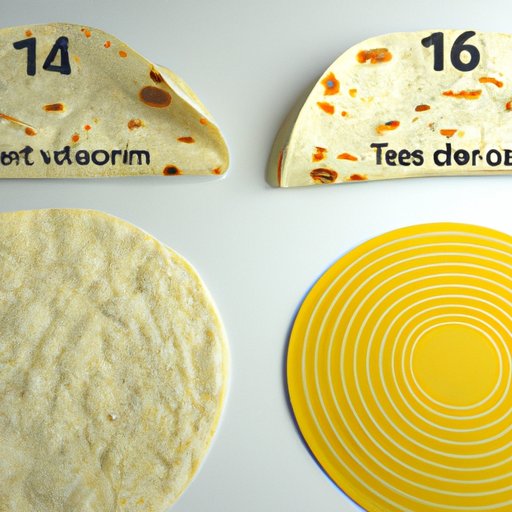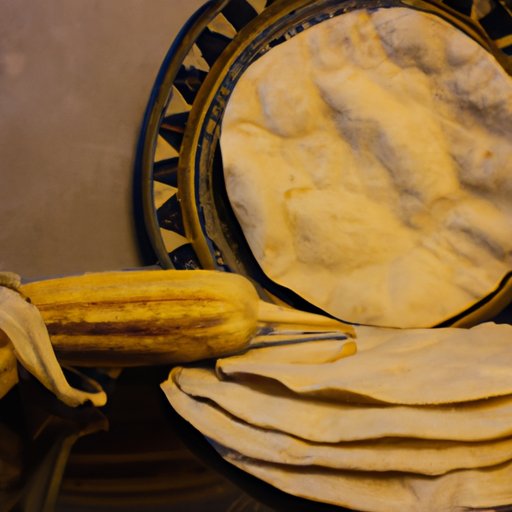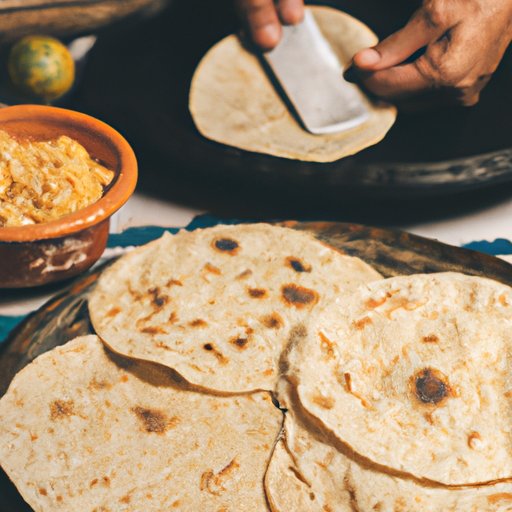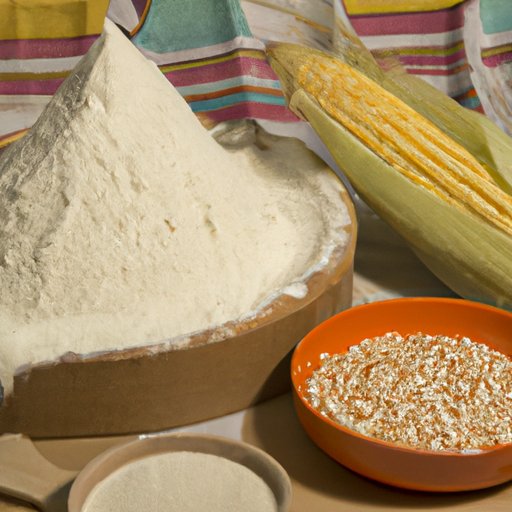Introduction
Tortillas are flatbreads that have been a staple in Mexican cuisine since the pre-Columbian era. They are made from either corn or wheat flour and come in a variety of sizes and shapes. In this article, we will explore which type of tortilla is healthier – corn or flour – and discuss the various nutritional and health benefits of both types.

Comparing Nutritional Values of Corn and Flour Tortillas
Corn tortillas are made from ground maize, while flour tortillas are made from wheat flour. Both types of tortillas contain vitamins and minerals, such as iron, calcium, magnesium, phosphorus, and potassium. Additionally, each type of tortilla contains macronutrients like fat, protein, and carbohydrates. The amount of these macronutrients varies depending on the brand and type of tortilla. For example, a 4-inch corn tortilla typically contains around 1 gram of fat and 2 grams of protein, while a 4-inch flour tortilla contains around 3 grams of fat and 4 grams of protein.
When it comes to calories, corn tortillas tend to be lower in calories than flour tortillas. A 4-inch corn tortilla typically contains around 60 calories, while a 4-inch flour tortilla contains around 100 calories. Other nutritional values, such as sodium, dietary fiber, and sugar, also vary slightly between the two types of tortillas.

Exploring the Cultural Significance of Corn and Flour Tortillas
Corn and flour tortillas have played an important role in Mexican culture for centuries. Corn tortillas were first used by the Aztecs, who believed them to be sacred and essential to their diet. Flour tortillas were introduced to Mexico by Spanish settlers in the 1500s and quickly became popular among the locals. Today, both types of tortillas remain popular in Mexico and are used in dishes such as tacos, quesadillas, and burritos.
In other parts of the world, flour tortillas are more widely consumed than corn tortillas. In the United States, for example, flour tortillas are much more popular than corn tortillas. This is likely due to the fact that they are easier to find in supermarkets and are often used as wraps for sandwiches, burgers, and other fast food items.
Examining the Health Benefits of Each Type of Tortilla
Both corn and flour tortillas can provide health benefits, provided they are made with whole grain ingredients. Whole grain tortillas are a good source of fiber, which helps to regulate digestion and keep you feeling full for longer. They are also high in complex carbohydrates, which provide your body with energy. Additionally, eating whole grain tortillas can help reduce your risk of developing certain chronic diseases, such as heart disease and diabetes.
If you’re looking for even more health benefits, you may want to opt for organic tortillas. Organic tortillas are made with ingredients that are free from pesticides, herbicides, and other chemicals. This means that they are not only better for the environment, but they can also be better for your health. Additionally, organic tortillas are often made with non-GMO ingredients, which can provide additional health benefits.
Finally, if you have a gluten sensitivity or allergy, you may want to opt for gluten-free tortillas. Gluten-free tortillas are available in both corn and flour varieties and are made with alternative grains, such as rice, quinoa, and amaranth. These alternatives can provide the same nutritional benefits as traditional tortillas without triggering any adverse reactions.
Looking at How to Choose the Best Tortilla for a Specific Diet
If you’re trying to lose weight, you may want to opt for low-carb tortillas. Low-carb tortillas are typically made with almond flour or coconut flour, which are both low in carbohydrates and high in healthy fats. They can help you stick to your goals while still enjoying the flavor of a traditional tortilla.
For vegetarians and vegans, there are several options to choose from. Vegetarian and vegan tortillas are usually made with plant-based proteins, such as soy or chickpea flour. They are also often made with vegetable-based oils, such as olive oil or avocado oil, which can provide additional health benefits.
Finally, if you suffer from food sensitivities or allergies, there are several gluten-free and allergen-free tortillas available. These tortillas are made with alternative grains, such as rice flour or quinoa flour, and are free from common allergens, such as wheat, dairy, eggs, and nuts.

Investigating Preparation Methods of Corn and Flour Tortillas
Traditional methods of preparing corn and flour tortillas involve heating them on a griddle or comal. However, there are several other ways to prepare tortillas. For example, you can cook them in the oven, microwave, or even use a deep fryer. Additionally, you can make homemade tortillas with ease. All you need is masa harina (corn flour) or all-purpose flour, water, and salt. With a few simple steps, you can whip up a batch of fresh, delicious tortillas in no time.
Conclusion
In conclusion, both corn and flour tortillas can provide health benefits when made with whole grain ingredients. Additionally, each type of tortilla has its own unique set of nutritional values and cultural significance. When choosing the best type of tortilla for your specific diet, consider the nutritional values, health benefits, and preparation methods of each type. You can also make your own tortillas with ease, using masa harina or all-purpose flour. No matter which type of tortilla you choose, you will be sure to enjoy a tasty, nutritious meal.
(Note: Is this article not meeting your expectations? Do you have knowledge or insights to share? Unlock new opportunities and expand your reach by joining our authors team. Click Registration to join us and share your expertise with our readers.)
